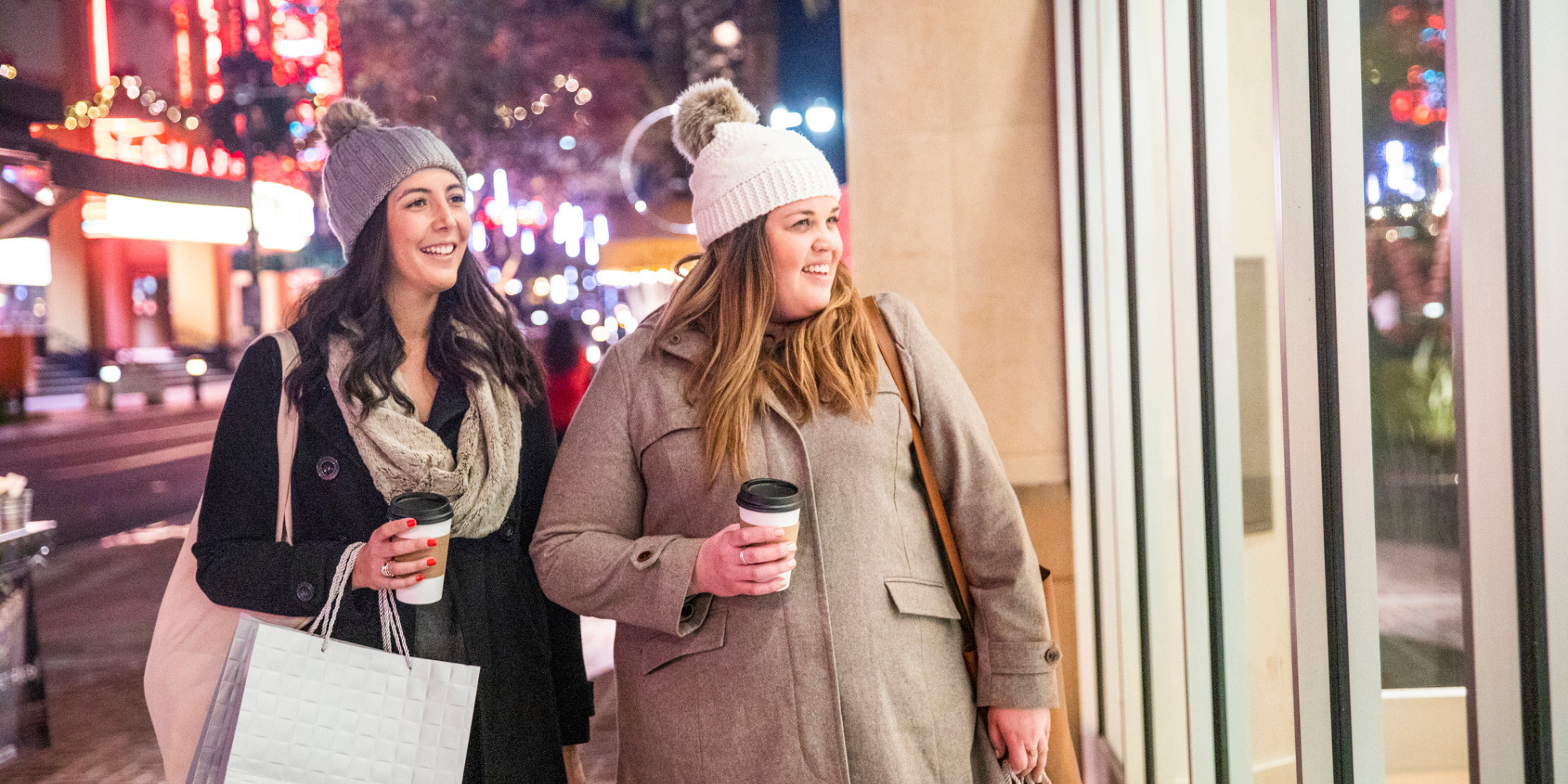Despite the cold weather and short days, many of our cities, towns and villages transform into festive gathering places in the month of December. Across the country local leaders organize holiday markets, festive popup events and seasonal light installations to celebrate the holidays. December is a time of increased economic activity where downtowns see more pedestrian traffic, retail sales are high, and many cities seize the opportunity to support local businesses through holiday specific programs that enhance public space. These unique seasonal experiences create welcoming public spaces.
Strong retail activity in December is an outlier from the rest of the winter months when cold temperatures and early sunsets often slow business activity. This winter lag can be especially harmful to small businesses. Heading into the coldest winter months there are many ways that cities can continue the creative placemaking that is common in December to engage residents and stimulate retail districts.
Dig Deeper
Read about the Four Core Values of Successful Public Spaces in winter.
Many cities across the country kick off the holiday season with “Small Business Saturday,” a national themed day to encourage people to start their holiday shopping at local small businesses. Small Business Saturday has historically been successful in bringing business to independent retailers and restaurants. While this national day only comes once a year, the idea of holding themed days or weeks to bring business to local businesses can be carried into the rest of the year. Holding a restaurant week in the winter is a great way to bring encourage residents to eat out during a time of year when there is often a lull in restaurant dining.
Street closures are commonly put in place to accommodate holiday markets or events and transform streets into festive community spaces, but cities and towns can continue to assess how their public space can be best used to serve the community in the remaining winter months. New York City found that open street corridors, or streets that had temporary closures for cars during the COVID-19 pandemic, significantly outperformed nearby streets in sales growth and growth in the number of businesses. In Niles, MI, City Council approved the closure of a downtown street for the Niles Outdoor Downtown Experience, or the NODE. The NODE has created space for outdoor dining and gathering over the past two winters and is kept warm by a large firepit at the center. This space was popular among residents and helped bring business to the surrounding restaurants. The city is in the process of planning for the third year of the NODE.
All year round, farmers markets are a common way that cities and towns repurpose their public space into a community centerpiece of economic and community development. Continuing farmers markets into the winter can be a strong tool for cities to support food suppliers and surrounding businesses in months of slower activity to provide consistency for those local businesses. Some farmers markets continue into winter in the same locations with some adaptations for the changing weather, while others, including Ithaca, NY ,and Missoula, MT, have adapted their farmers markets for winter by locating to an indoor or partly indoor location.
Cities can also examine their park space and how it can best be used in the winter. While city parks may be less of a draw in the winter months, programming that is fun and unique to the season can bring more people to parks in the winter. Madison, WI, turns the city parks into winter recreation destinations by setting up winter sports including cross country skiing, sledding and ice skating and offering Friday night events with music, games, movies, and skating. These winter events create opportunities to feature local businesses with food trucks or popup stores.
While Christmas trees and holiday light displays come down in January, cities can still reap the benefits of lighting displays and other downtown art installations throughout the winter months. These installations both support local artists, downtown businesses, and make downtown streets more accessible to visitors during the darkest months of the year.
Hillsboro, OR, has used several strategies to simultaneously support the art community and boost the downtown through special events and seasonal lighting installations in the Hillsboro Cultural Arts District. The city invites artists to paint storefront windows each Winter and Spring and holds an Art Walk on the first Tuesday of each month to highlight local businesses and artists and bring the community together. Hillsboro is on its second year of installing seasonal lighting to create a bright and welcoming environment for downtown visitors from November to March.
In February 2022, downtown Midland, MI, held its first “Winter Wanderland,” where local businesses sponsored unique ice sculptures to be placed throughout downtown, including a variety of games and interactive sculptures. The art installation began with an event showcasing the art, and the sculptures remained in downtown Midland throughout the winter for visitors to come and enjoy until the sculptures naturally melted.
Cities and towns must be adaptable and creative to come up with solutions to enhance public space, engage residents and support local businesses in the winter. Cities have an important role to play as conveners of local businesses, economic development organizations, philanthropic organizations and more. City leaders must bring these groups together to think about collective needs and solutions that will address the seasonal challenges that each community faces.










